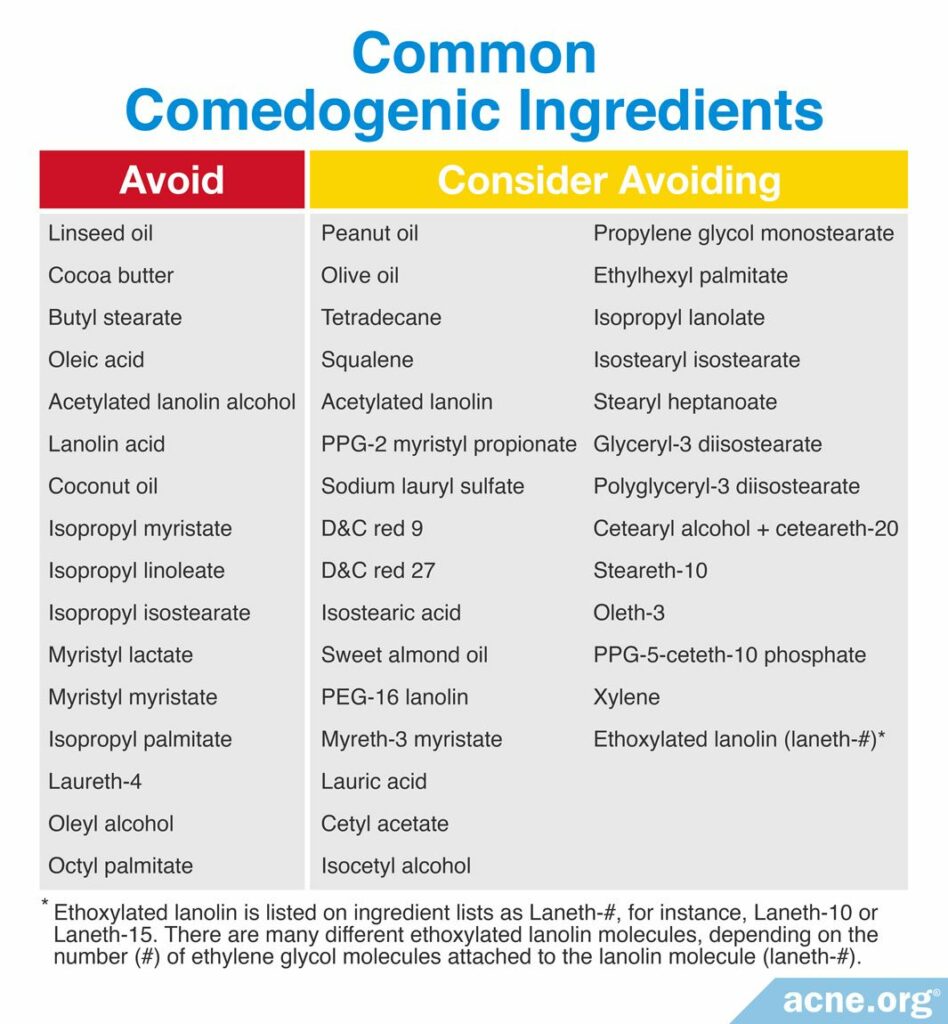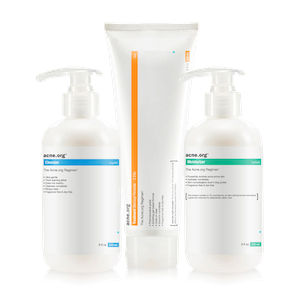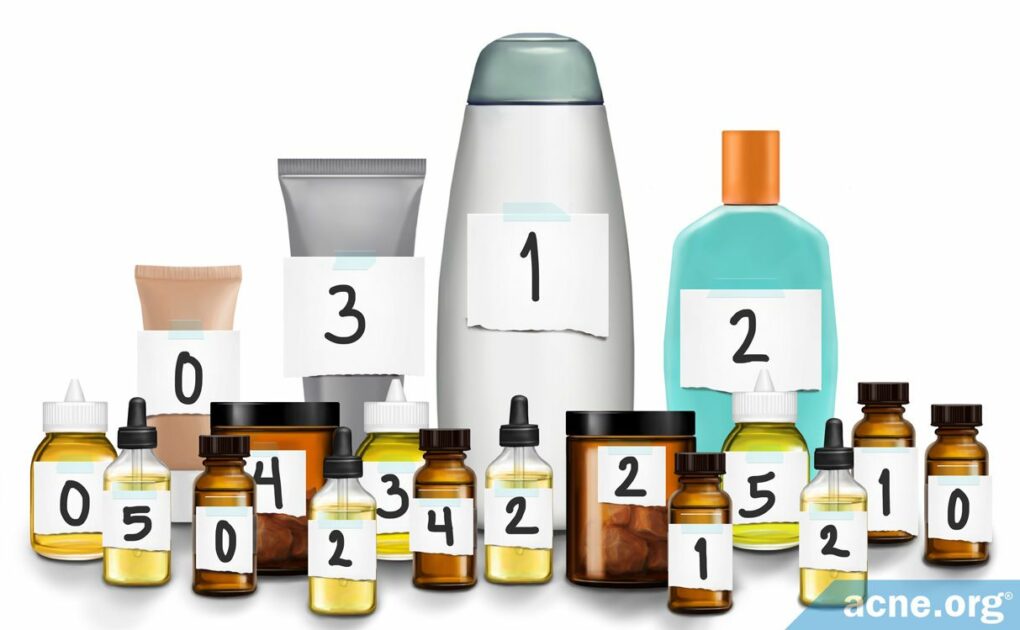Comedogenic Ingredients Are Ingredients That Clog Pores. There Are 45 Ingredients to Watch Out For.
All acne lesions start with clogged pores, which are called comedones.
Comedogenicity is a scientific term that describes the potential of a substance to cause comedones.
In other words, when a substance is comedogenic, it is likely to clog pores and lead to acne.
To test a substance’s ability to clog a pore, scientists can use two methods:
- Rabbit Ear Assay: testing on the skin of rabbit’s ears – less reliable – faster, less expensive [Note: Acne.org does not test on animals].
- Human Method: testing on real people – more reliable – slower, more expensive.
Researchers have performed 11 studies using either the rabbit ear assay or human method to investigate the comedogenicity of hundreds of ingredients as well as final products. Some of these ingredients and products were found to be comedogenic, and we have carefully compiled and analyzed the results of these studies. After a full review, we have identified 45 ingredients that are likely to be comedogenic.
45 Ingredients that Are Likely to Be Comedogenic
There are many variables involved in comedogenicity, and just because a study has determined that an ingredient is comedogenic does not necessarily mean a product that contains that ingredient will definitely clog pores. However, based on the research so far, we have compiled two lists of ingredients to avoid or consider avoiding.
List 1: Avoid: At least two (2) rabbit ear assays or at least one (1) human method tests have shown the ingredient to be comedogenic.
List 2: Consider Avoiding: Only one (1) rabbit ear assay showed the ingredient to be comedogenic.
When you are looking at the back of a product and reading the ingredient list, pay particular attention to the first seven (7) ingredients. This is because ingredients listed higher on an ingredient list are included at a higher percentage in the product. Ingredients listed at the end of an ingredient list are normally included in the product at less than 1% and may not cause a problem.

For the details on all 11 studies and an in-depth look at comedogenicity and comedogenic ingredients, see the longer and more complete version of this article here.
References
- Kligman, A. M. & Mills, O. H. Acne cosmetica. Arch Dermatol 106, 843 – 850 (1972). https://www.ncbi.nlm.nih.gov/pubmed/4264346
- Mills, A. M. & Kligman, O. H. Acne detergicans. Arch Dermatol 111, 65 – 68 (1975). https://jamanetwork.com/journals/jamadermatology/article-abstract/534711
- Kligman, A. M. & Kwong, T. An improved rabbit ear model for assessing comedogenic substances. Br J Dermatol 100, 699 – 702 (1979). https://www.ncbi.nlm.nih.gov/pubmed/157151
- Mills, O. H. & Kligman, A. M. A human model for assessing comedogenic substances. Arch Dermatol 118, 903 – 905 (1982). https://www.ncbi.nlm.nih.gov/pubmed/7138047
- Mills, A. M. & Kligman, O. H. Comedogenicity of sunscreens. Arch Dermatol 118, 417 – 419 (1982). https://jamanetwork.com/journals/jamadermatology/article-abstract/543247
- Morris, W. E. & Kwan, S. C. Use of the rabbit ear model in evaluating the comedogenic potential of cosmetic ingredients. J Soc Cosmet Chem 34, 215 – 225 (1983). https://pdfs.semanticscholar.org/5be8/c6c2a7bb0509ac8bf0e5ea661adcd859bd6f.pdf
- Fulton, J. E., Pay, S. R. & Fulton, J. E. Comedogenicity of current therapeutic products, cosmetics, and ingredients in the rabbit ear. J Am Acad Dermatol 10, 69 – 105 (1984). https://www.ncbi.nlm.nih.gov/pubmed/6229554
- Lanzet, M. Comedogenic effects of cosmetic raw materials. Cosmet Toilet 101, 63 – 72 (1986).
- Fulton, J. E. Comedogenicity and irritancy of commonly used ingredients in skin care products. J Soc Cosmet Chem 43, 321 – 333 (1989). http://www.nononsensecosmethic.org/wp-content/uploads/2013/12/Comedogenicity-and-irritacy-of-commonly-used-ingredients.pdf
- Draelos, Z. D. & DiNardo, J. C. Are-evaluation of the comedogenicity concept. J Am Acad Dermatol 54, 507 – 512 (2006). https://www.ncbi.nlm.nih.gov/pubmed/16488305
- Nguyen, S. H., Dang, T. P. & Maibach, H. I. Handbook of Cosmetic Science and Technology, 3rd Edition. Informa Healthcare 583 – 586 (2009).
- Kligman, A. M. Petrolatum is not comedogenic in rabbits or humans: A critical reappraisal of the rabbit ear assay and the concept of “acne cosmetic.” J Soc Cosmet Chem 47, 41 – 48 (1996). https://admin.mashable.com/wp-content/uploads/2015/08/14F6108A.pdf
 Acne.org Products
Acne.org Products